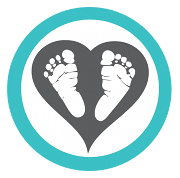"The Baby New Year is an American personification of the start of a new year, commonly seen in various New Year's customs, especially holiday cards and illustrations for store window displays. The stereotypical representation of Baby New Year is as a male baby wearing nothing more than a diaper, a top hat and a sash across his torso that shows the year he is representing. Sometimes he is holding an hourglass or is otherwise associated with one. Often, he is not a complete newborn but is slightly older, because he is frequently shown standing on his own, barely walking, or having a small amount of head hair.
More baby talk...
J.C. Levendecker's December 28, 1907 cover of The Saturday Evening Post depicting a stork and Baby New Year.
The myth associated with him is that he is a baby at the beginning of his year, but Baby New Year quickly grows up until he is an elderly bearded man like Father Time at the end of his year. At this point, he hands over his duties to the next Baby New Year.
In addition to being a mythical figure, the Baby New Year is sometimes a real person. The first baby born in any village or city in a certain year may be honored by being labeled as the official Baby New Year for that year. The official Baby New Year can be male or female, even though the mythical Baby New Year is nearly always male. Attempts to name an official Baby New Year for an entire country have sometimes been made, but generally there are multiple contenders and no single Baby New Year can be confirmed."
"The tradition of using a baby to signify the new year was begun in Greece around 600 BC. It was their tradition at that time to celebrate their god of wine, Dionysus, by parading a baby in a basket, representing the annual rebirth of that god as the spirit of fertility. Early Egyptians also used a baby as a symbol of rebirth.
Although the early Christians denounced the practice as pagan, the popularity of the baby as a symbol of rebirth forced the Church to reevaluate its position. The Church finally allowed its members to celebrate the new year with a baby, which was to symbolize the birth of the baby Jesus.
The use of an image of a baby with a New Years banner as a symbolic representation of the new year was brought to early America by the Germans. They had used the effigy since the fourteenth century." (Wilstar.com)























I really appreciate your post and it was superb .Thanks for sharing.I would like to hear more about this in future.
ReplyDelete